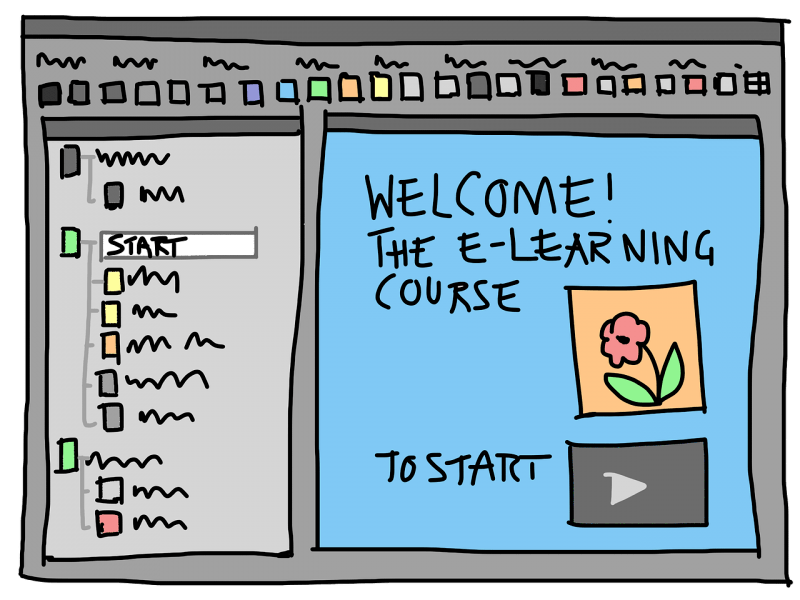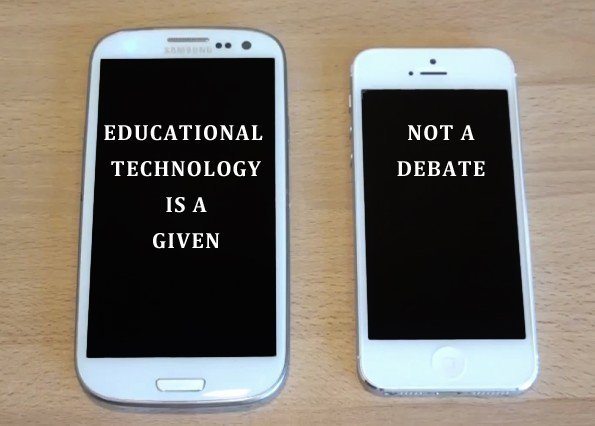Digital learning for K12 is both effective and efficient for the following reasons:
- Wider Reach
A larger number of students can access and benefit from the content and therefore have an opportunity to learn. - Analytic Driven
Allows the system to gather, track and analyze the effectiveness of the learning content and the learning curve of the learner. - Adaptability
The content can be reused and accessed by different learner groups who wish to learn at their own pace. - Accessibility
Addresses the problem of making learning material available to all learners including those with disabilities.
However, it is important to understand the suitability of digital learning to a particular context. It is not advisable to attempt to digitize everything in the name of technology-aided learning.
A learning program needs to consider 3 things that impact learning:
- What is the desired outcome of the learning process? (Learning Objective)
- How should the teacher engage with the learner? (Instructional Method)
- What mechanisms should be used for effective engagement? (Delivery Method)
When planning digital learning, we need to ask the question: does the learning objective lend itself to a technology-aided delivery? If it does, what instructional methods are effective for the learners and instructors involved?
Learning Objectives
Any learning program aims to develop the following three types of skills:
- Cognitive skills
Cognitive skills involve conscious mental activities such as thinking, understanding and learning, remembering and applying methods in new situations to solve problems. - Interpersonal skills
Interpersonal skills are skills that help an individual interact with others, individually and in groups, such as active listening, presenting, negotiating, etc. - Psycho-motor skills
Psycho-motor skills relate to motor action directly proceeding from the mental activity, like throwing a ball, drawing, driving, etc.
Learning objectives are designed around these skills, in addition to the learning topic under consideration. A specific learning objective will require specific instructional and delivery method choices.
For instance, Lucy a science teacher would like to demonstrate the principle of centripetal force to grade V students. In order to be the teaching effective and helpful she should keep Learning Objective, Instructional Method and Delivery Method before designing the course.
Learning Objective: “Demonstrate the Principle of Centripetal Force”
Instructional Method: “Descriptive Method” which would aim at students to listen/read/observe and assimilate the concept.
Delivery Method: “Interactive Presentation” which aims at using text, images, audio, video/animations and practice (i.e. questions and feedback).
Instructional Methods
The design of an e-learning course for K12 involves using a combination of the following instructional methods:
- Descriptive Methods
Descriptive methods require learners to listen, read or observe. It emphasizes absorption of new information. Descriptive methods are comprised of presentations, case studies, worked examples and demonstrations. It facilitates the conceptual and factual knowledge acquisition, orientation, motivation, and attitudinal change. - Applied Methods
Applied methods enable the learners to engage in practical, often hands-on activities. These can range from simple exercises to complex methods like simulation or research activities. Applied methods consist of demonstrations, job aids, case-based or scenario-based exercises, role-play, simulations and games, etc. - Concerted Methods
Concerted methods focus on the social dimension of learning and engage learners in sharing knowledge and performing tasks in a collaborative way. They add a social dimension to the learning experience. It includes online-guided discussions, collaborative work and peer tutoring.
Delivery Methods
Here are some common delivery methods:
Presentations
Information on a specific topic is organized into a simple learning resource that could comprise of a document or a power-point presentation. These can be developed quickly and are useful for passive learning without any interactivity.
The applicable use case would be a lecture in the class.
High level Design for Presentations
Simulations
This is used to develop a deep understanding of complex systems. Digital learning games involve a competitive component that has a challenge with a set of rules and constraints. These are highly interactive and should be used where the learners are required to practice high cognitive performance levels.
One of the applicable use cases is to “Learn & Simulate the concept of Brownian Motion”
High-level Design for Simulations & Games
Collaboration
This method should be used where the learners are required to express their knowledge through discussion, negotiation, debate or extempore. It requires active support of a moderator to provide help and moderation during the process.
An applicable use case is Model United Nations a competition that is organized to foster collaborative learning.
High-level Design for Collaboration
Conclusion
The reason Ravi was dissatisfied with the overall experience was because he was expecting much more engaging content – content much different from otherwise boring textbooks.
When the technology delivered the same content as the book, he was disappointed. Clearly, content publisher thought that digitizing content is enough to create digital learning in this case.
The efficacy of a learning objective is dependent on the Instructional and Delivery Method. At times the learning objective fails to deliver the intended outcome not because of the learning content but because of inappropriate choice of instructional and delivery method.
For instance with Learning Objective to “Teach Music” if we choose “Simple Learning Method” as a Delivery Method it would be an inappropriate choice since this method depends on using docs and power-point presentations etc.
Hence, it is important to employ the use of a suitable instructional & delivery method for the effectiveness of a learning objective.
In forthcoming posts, we will get into more details and discuss the nuances of delivery methods and the design of digital learning.
References:
- Anderson, L.W., Krathwohl, D.R. (Eds.), A Taxonomy for Learning, Teaching and Assessing. A Revision of Bloom's Taxonomy of Educational Objectives, Addison Wesley, 2001
- Bersin J. The Blended Learning Book. San Francisco: Pfeiffer, 2004
- Clark R.C., The New Virtual Classroom: Evidence-based Guidelines for Synchronous e-Learning, Pfeiffer 2007
- Clark R.C. Evidence-Based Training Methods. A Guide for Training Professionals. Alexandria, Virginia: ASTD Press, 2010
- Clark R.C., Lyons, C. Graphics for Learning: Proven Guidelines for Planning, Designing, and Evaluating Visuals in Training Materials, Pfeiffer 2011
- Clark R.C., Mayer R.E., e-Learning and the Science of Instruction - Proven Guidelines for Consumers and Designers of Multimedia Learning, Second Edition, Pfeiffer 2005
- Crandall B., Klein G. and Hoffman R.R. Working Minds. A Practitioner's Guide to Cognitive Task Analysis. The MIT Press, 2006
- Dessinger, J.C. & Moseley, J.L. Confirmative Evaluation: Practical Strategies for Valuing Continuous Improvement. San Francisco: Pfeiffer, 2004
- Gagne R. M., The conditions of learning and theory of instruction, Rinehart and Winston, 1985
- E-learning methodologies, A guide for designing and developing e-learning courses. Food and Agriculture Organization of United Nations
- Gronlund N. E., Assessment of Student Achievement, Allyn & Bacon, 2002
- Gronlund N. E., How to write and use Instructional Objectives, Prentice-Hall Inc., New Jersey, 2000
- Horton W., Designing Web-Based Training, John Wiley, 2000
- Jonassen D. H., Learning to solve problems - An instructional design guide, Wiley & Sons 2004
- Kirkpatrick D.L. & Kirkpatrick J.D. Evaluating Training Programs. The Four Levels. San Francisco: Berrett-Koehler Publishers, 2006
- Mager R. F., Preparing instructional objectives, CEP Press, Atlanta,Third Edition 1997
- Merrill, M.D. Component Display Theory in Reigeluth, C.M. Instructional Design Theories and models, 1st vol., Hilldale (New Jersey, USA), Erlbaum 1987
- Morrison D., E-Learning Strategies - How to Get Implementation and Delivery Right First Time, John Wiley 2003
- Morrison G.R., Ross S.M., Kemp J.E., Designing Effective Instruction, Wiley & Sons, Inc., Third Edition 2001
- Quinn C.L., Conner M.L., Engaging Learning: Designing e-Learning Simulation Games.
Pfeiffer Essential Resources for Training and HR Professionals, 2005 - Shrock, S. A. & Coscarelli, W. C., Criterion-referenced test development: Technical and legal guidelines for corporate training and certification. (3rd.ed.). San Francisco, CA: John Wiley & Sons, 2007
- Sokolowski, J.A.& Banks, C.M., Modeling and Simulation for Analyzing Global Events. John Wiley & Sons, 2009
- Westgaard O., Tests That Work: Designing and Delivering Fair and Practical Measurement Tools in the Workplace, Pfeiffer & Co, 1999












